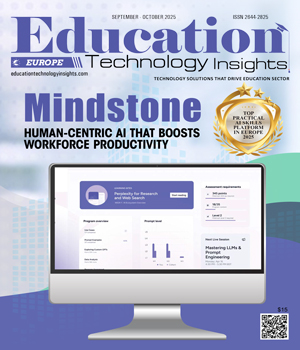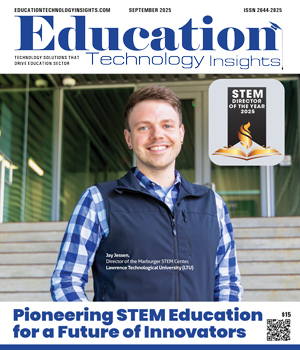THANK YOU FOR SUBSCRIBING
Be first to read the latest tech news, Industry Leader's Insights, and CIO interviews of medium and large enterprises exclusively from Education Technology Insights
Ensuring the Human Remains in Digital Education
Brianna Le Busque, PhD., Program Director, University of South Australia
 Brianna Le Busque, PhD., Program Director, University of South Australia
Brianna Le Busque, PhD., Program Director, University of South AustraliaFor the past few years, I’ve included a slide in my ‘housekeeping’ PowerPoint presentation I give at the beginning of each course I teach. This slide depicts a royalty-free picture of a robot with the text “I’m not a bot”. I put this slide in as a reminder to my students, but also as a reminder to me.
As educators, we’re increasingly working within digital landscapes. Every course I teach now has strong online elements, and during periods of fully online teaching, I often found myself feeling like a bot. I am always behind a computer screen, sending out bulk emails for efficiency, interacting with student ID numbers rather than people. The line between digital efficiency and disconnection blurs quickly.
But I’m not ready to hand my job over to a machine just yet. In fact, I hope to continue working alongside technology for many years to come. So, I often ask myself: What can I do that bots can’t? The simple answer: Be human.
At its core, education is relational. Students are more likely to engage, persist, and succeed when they feel a sense of belonging and trust in their learning environment and educators. Empathy is essential for student success, especially as our students are increasingly time poor. Also, the human element fosters critical soft skills: empathy, communication, teamwork and ethical reasoning.
“At its core, education is relational. Students are more likely to engage, persist, and succeed when they feel a sense of belonging and trust in their learning environment and educators”
I have found some ways to keep my human presence in my courses (without adding too much time in my already full calendar):
• Design for Presence: Effective online courses are not just repositories of information, they are communities of learning. Small but intentional touch points show the human behind the screen. A simple technique that I use is providing students with short, 5-minute, weekly update videos. These do not (and arguably should not) be scripted or heavily edited, so they are a quick way to connect.
• Make communication personalised: Students can easily tell when content has been recycled. Rather than simply copy and pasting the “welcome to week 2” post from last year, adapt it to make it personal. Where possible mention something in current zeitgeist to show that a real person wrote it, can you talk about a sporing team win, or mention that you binged a newly released show on the weekend? These small details can have a big impact.
• Empathetic Teaching Practices: Sure, AI can write an email that sounds empathetic, but it can’t feel. True empathy is expressed through clear and kind communication, acknowledging broader social challenges or individual student hurdles and following up when someone’s struggling.
• Storytelling: Students connect with people, not PowerPoints. I use storytelling to make content relatable, whether that’s in writing, audio, or video. I also try to include my voice (literally and figuratively) in asynchronous material and show my face wherever I can. This humanises the content, especially when the concepts are complex or abstract.
As digital education continues to evolve, we need to actively protect what makes learning authentic and meaningful. Technology can and will continue to enhance learning, but it shouldn’t replace educator’s humanity. I believe it is our empathy, creativity, passion and presence that makes the difference between a forgettable course and a transformative one.
So, remember, you’re not a bot.
Read Also
From Isolation to Interaction: Reimagining Technology for Human Connection
Building an Understanding of AI in Learning Environments
Integrating SEL, Digital Citizenship, and AI Literacy in K–8 Schools
Preparing Students for More than their First Job
Moving Beyond Reaction to Proactive Student Engagement
Tech-Enabled, Human-Centered: Effective Student Support

I agree We use cookies on this website to enhance your user experience. By clicking any link on this page you are giving your consent for us to set cookies. More info






















